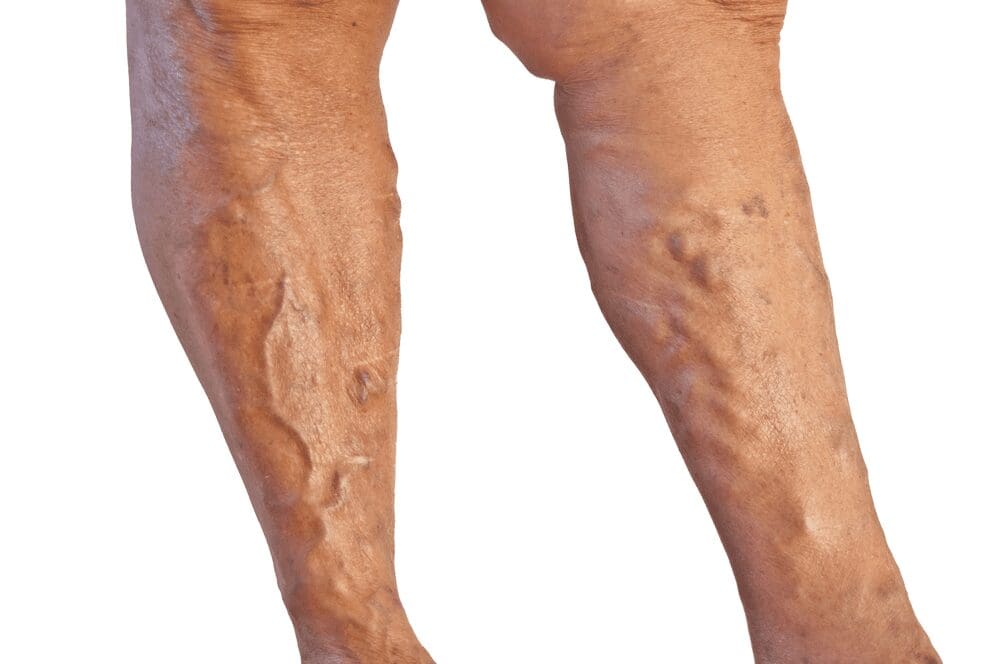Poor vein health can lead to many more problems than itchiness, localized swelling, and self-consciousness caused by skin discoloration. It can lead to such health complications as pulmonary embolisms, blood clots, and ulcers. At North Texas Vein & Vascular in Flower Mound, TX, we pride ourselves in offering several FDA-approved treatments and procedures to correct diseased veins, including an ambulatory phlebectomy.
An ambulatory phlebectomy is one of the most commonly used methods for the treatment of varicose veins. It has been used for many years successfully, and phlebectomy was first conceptualized by Hippocrates around 400BC. There are many reasons people prefer this method over alternatives, including how quick the procedure is and how easy the recovery is. Read on to learn more about what to expect before, during, and after surgery.
How Long Does an Ambulatory Phlebectomy Take?
An ambulatory phlebectomy takes around 45 minutes to an hour to complete. The time your procedure takes to complete depends on several factors, and procedures can take as few as 30 minutes. As a general rule, the deeper your disordered veins are, the longer your procedure will take. Similarly, you can expect your procedure to take longer if you have many large veins that need to be removed.
What Can I Expect During My Procedure?
During your procedure, the area of concern will be examined using highly advanced ultrasound technology. We’ll confirm that all of your vital signs indicate that the procedure will be safe, and you will be free to relax and listen to your favorite music if you bring a headset or portable music player. A local anesthetic will be administered via injection into the area of concern, resulting in localized numbing.
Once your targeted area is numb, we will make numerous tiny incisions using a needle. The tip of this needle is roughly 1 mm in diameter. Through the tiny incisions, a small hook is inserted. With this hook, we will remove a portion of the disordered vein. Once the vein or veins are removed, the area will be wrapped with a protective bandage, and you’ll be encouraged to walk around. You will be free to go home and relax, but you should not go to work.
Will I Be Able to Address All of My Concerns in One Session?
Whether you can address all of your concerns in one session depends on the number of veins that need to be removed. You should not anticipate needing more than one procedure to have all of your disordered veins removed. However, this can only be confirmed after all of your concerns have been evaluated during an initial consultation by a vein expert.
What Should I Expect Before My Procedure?
Before your procedure, you’ll need to sit down with Dr. Robert Handley for an evaluation of your concerns and health. During this consultation, he’ll verify that this procedure is ideal for you based on the location and severity of your disordered veins, your goals, your lifestyle, and your health. If a phlebectomy seems like a good fit, he’ll go over all of the preparation and aftercare steps you’ll need to take.
What Preparation Steps Will I Need to Take Before Surgery?
Prior to surgery, you will be able to eat breakfast and lunch as usual because fasting is only required to prepare for general anesthesia. During a minimally-invasive phlebectomy, general anesthesia won’t be necessary to keep you comfortable. Rather, you’ll just need to take a prescription muscle relaxant and analgesic an hour before your procedure. You should be able to take any daily medications as usual on the day of your procedure.
However, this is not always the case. Advise Dr. Handley on all of the drugs and supplements you’ve taken recently and take on a daily basis. If there are any contraindications, you will need to talk to your doctor about whether it is safe for you to stop taking certain pharmaceuticals temporarily. It is also essential that you buy compression garments before your procedure. Make sure you try them on and bring them with you to your appointment.
What Do You Look for in a Phlebectomy Candidate?
When determining who is a good phlebectomy candidate, Dr. Handley considers several factors. One thing he looks for is varicose or reticular veins. Whether your disordered veins are symptomatic or asymptomatic in nature will not affect whether you are considered a good candidate for this procedure. Usually, though, people who seek this procedure are experiencing symptoms that detract from their quality of life.
What Contraindications May Prevent Qualification?
Some of the most common contraindications that may prevent you from qualifying for surgery include serious illnesses, severe peripheral edema, and drugs and medical conditions that prevent blood clotting. Diseases that cause your blood to coagulate too much will also prevent you from qualifying for this procedure. Moreover, you will not be considered a good phlebectomy candidate if you suffer from cellulitis or infectious dermatitis in the targeted area.
What Should I Expect During My Recovery Process?
You should expect your recovery process to be fairly quick and easy. You’ll need to wear a protective dressing and compression garment over your incision site for 24 hours post-op. Once 24 hours have passed, you can remove the protective dressing. However, you’ll need to wear the compression garment for another 13 days. Time off from work is required after surgery, but you shouldn’t need to take much time off from work. Most people only need to take two or three days off.
The most notable exception to this is that you will need to take a full week off from work to dedicate to your recovery if your job is very physically demanding. You should only engage in light physical activity during the first seven days post-op. At first, you may only feel up to five- or 10-minute gentle walking sessions. This is perfectly fine, but aim to get 30 minutes of light walking daily.
What Other Restrictions Are Required After Surgery?
In addition to avoiding vigorous physical activity, like lifting heavy weights or doing HIIT, you will need to avoid excessive heat. To mitigate the risk of infection and give your incisions ample opportunity to heal, stay out of hot tubs, steam rooms, and dry saunas. You can bathe after your procedure, but you should not take a hot bath within the first seven days post-op.
Other FAQs Answered
What Causes Varicose Veins?
There are a number of factors that can lead to the development of varicose veins. Some of the most common causes are heritable traits, pregnancy, injury, and the natural aging process. However, there are also a number of causes that you can prevent. For instance, varicose veins are sometimes caused by constipation, obesity, and hormonal birth control.
Do I Have Varicose Veins?
The most common sign of varicose veins is bulging, rope-like veins that are raised and purple in color. Another very common sign of varicose veins is leg cramping, especially at night. Moreover, there is a good chance that you have varicose veins in your legs if you experience severe heaviness or achiness in the legs. Similarly, you probably have varicose veins in your legs if you experience:
- Localized bruising
- Localized swelling
- Worsened pain after sitting for too long
- Worsened pain after standing for too long
- Localized itching
- Localized burning
- Localized throbbing
How Long Will the Results of My Procedure Last?
The results of this procedure are considered permanent. Once the diseased vein is removed from your body, it won’t be replaced. Rather, blood flow is routed to healthy veins nearby. However, it is possible to develop varicose veins again after surgery. The likelihood that you will develop more varicose veins depends on your lifestyle, genetics, and other factors.
How Can I Reduce My Risk of Developing More Varicose Veins?
One of the most effective steps you can take to reduce the likelihood of developing varicose veins in the future is to maintain a healthy weight. The less body mass you have, the less strain your blood vessels are placed under.
Schedule Your Initial Consultation Today
An ambulatory phlebectomy usually takes between 45 and 60 minutes to complete, but sometimes only 30 minutes are required to complete the procedure. Recovery timelines vary, but you should Contact us today at North Texas Vein & Vascular in Flower Mound, TX to schedule your initial diseased vein treatment consultation.

